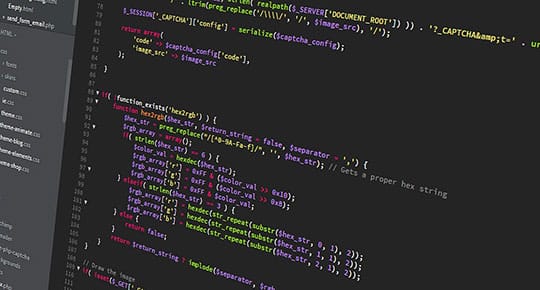Today, in a technology-driven world, programming is a high demand skill. Considering a growing need for coders, almost everyone wants to become one. However, this idea might turn out quite tricky for employers. Thus, when looking for a perfect developer, check out Python developer salary experience and the best hiring strategies. Due to its simplicity, basically anyone can download a Python tutorial and start learning one, but it doesn’t mean that this coder will be able to meet all your needs.
History of Python
Python is one of the languages behind the software being already some software generations old. Dating back the 90’s, Python is a high-level resilient, flexible and scalable coding language, according to Hunted Hive. Its first version (version 0.9.0) was published at alt.sources by a web developer Guido Van Rossum in February 1991. This first release of Python code already had functions, handling, and the core data types of dict, list, str, etc. Version 0.9.0 of Python had a module system and was, at that time, object-oriented, Python Course informs. According to Packtpub, Python’s origins date back even to December 1989. Its name does not refer to a snake, but rather to the comedy troupe from Britain called Monty Python’s Flying Circus.

Python originates from a programming language ABC, which was a project of the Dutch CWI research institute and the Amoeba distributed the operating system. One of the advantages of the Python language was that it became easy extendable and could support multiple platforms. Python was also able to communicate with different file formats and libraries. Version 1.0 of Python was released in January 1994, it included such functional programming tools as a map, lambda, reduce and filter. Python 2.0 appeared in October 2000 and included a full garbage collector, list comprehensions, and this version already supported Unicode, Python Course writes.
Python had more versions of 2.x for the next 8 years until Python 3 was released in December 2008 with no backward compatibility. This version concentrated on removing the duplicates of modules and constructions. Packtpub claims that Python 2 is still remaining as a supportive language for now, but Python 3 is something that was inevitable in Python development history. Despite all the wars in the Python community, Python 3 is the future.
Recommended for you: Java Programming: The Core Concepts of Java Development.
Popularity of Python & Learning Resources
Python is sometimes compared to the English language, as it has the same role as English has in international business, Python has for web development, according to Hunted Hive. Due to its convenience, high adaptivity and speed, it is extensively used by such companies as NASA, Nokia, Facebook, YouTube, and Google. Moreover, Python is perfect for machine learning, AI, and API integration. Python IDEs for data science are excellent, they make data analysis and machine learning much easier. Hunted Hive prediction is that Python will become the No. 1 web development language by 2020. Moreover, its userbase is growing due to Python’s easy syntax, multiple Python programming paradigms, support of functional, parallel and object-oriented programming.

Simple Programmer provides 10 resources where newcomers can learn Python, as well as code-slingers, can upgrade their knowledge and improve Python mastery. “RealPython” will allow you to learn the basics of Python 2.7 and Python 3, and web development using Flask, Python Django, and web2py. The Python Jumpstart course is created for those who already have some programming experience. Computer science online ranks an e-book ‘Learn Python the Hard Way’ as one of the best sources for learning Python for beginners. Among other useful resources are CodingBat, Codeacademy, Head First Python, Learning Python and many others.
Why Python Is a Go for Web Development
Definitely, Python has gained popularity and love of thousands of developers due to its usability. Hoyt Koepke lists such advantages of Python as a programming language as readability, language interoperability, and design, the balance of high-level and low-level programming, documentation and hierarchical module system, available libraries and data structures, downsides and testing framework. Meanwhile, the BestProgrammingLanguageFor.me points out that Python is s great choice due to its friendliness to beginners, scalability, easy understanding and maintenance, flexibility with no hard rules of feature building.
Also, Python has a vast community being 5th Largest Stack Overflow Community with 85.9k followers, the 3rd Largest Meetup Community with over 1300 Python groups on Meetup.com of 608k members. Thus, in terms of programming languages, Python is the 3rd largest community. And it is the 4th Most-Used Language on GitHub.

Python Frameworks and Their Comparison
There is a variety of Python web frameworks. You can choose Bottle, Django, Tornado, Flask, Diesel, Pecan, Pyramid, Falcon and so much more. The main focus here will be given to Django, Flask and to functionality comparison by Airpair. Flask is perfect for small apps, it is a so-called “microframework” aimed at simpler requirements. Meanwhile, Django and Pyramid are for larger apps but have various approaches in terms of flexibility and extensibility.
Django makes it easier for devs to quickly dive into apps without deciding which infrastructure they should have. The Pyramid is more flexibility oriented, it allows web devs to choose the URL structure, database, templating style etc. Whereas Django has a set of necessary batteries for a web application, for example, it includes an ORM, Flask and Pyramid let the programmer decide how to store data. Django includes built-in forms, basic database administration, templating, routing, authentication etc. In contrast, Pyramid has authentication and routing but database administration and templating need external libraries. Django and Pyramid also have built-in bootstrapping tools, while Flask doesn’t. Django and Pyramid are very mature frameworks, they have enough extensions and plugins to meet a wide range of needs.
You may also like: 8 Free Programming Tools for a Web Application Development Project.
Python Developer Salary in Different Countries

Here is an information for businesses looking for Python salaries in different countries. Salaries depend on a variety of factors such as country of residence, Of course, software engineer salary and junior python developer salary in one country and even in one company will differ significantly.
Median Python dev salary (net) in the USA is $76,521. Junior SE with Python skills is paid $60,807 per year, while Senior SE gets the highest wage of $99,869 per year. Python programmer salary in Berlin, Germany is $56,434 per year, while the average in Germany is $58,536. Junior software engineer with Python skills gets $48,437, senior SE receives $70,300 per year. In Ukraine, Junior SE gets $6,000 per year, software SE – $20,700, senior SE – $38,400 annually, according to DOU.
How to Hire a Python Developer

Python developers are hired in big companies and startups to perform a variety of complicated tasks. An employer, seeking a dedicated Python dev or a team of developers, might face challenges to find an experienced expert. Outstaffing is the answer here since it will save time and costs. Moreover, Outstaffing is a trusted way for hiring, and it also helps to reduce the cost of your development. It is fast, reliable and high-quality. If an employer has time and very scarce budget, he might be interested in hiring from freelance platforms. They can provide business with short-term players and give a good insight into Python programming salary. More and more companies are choosing the option of our staffing services from expert agencies because they find it to be easier and resource saving.
This article is written by Anastasia Stefanuk. She is a passionate writer and a marketing manager at Mobilunity. The company provides dedicated development teams, so she is always aware of technology news and wants to share her experience to help tech startups and companies to be up-to-date.





